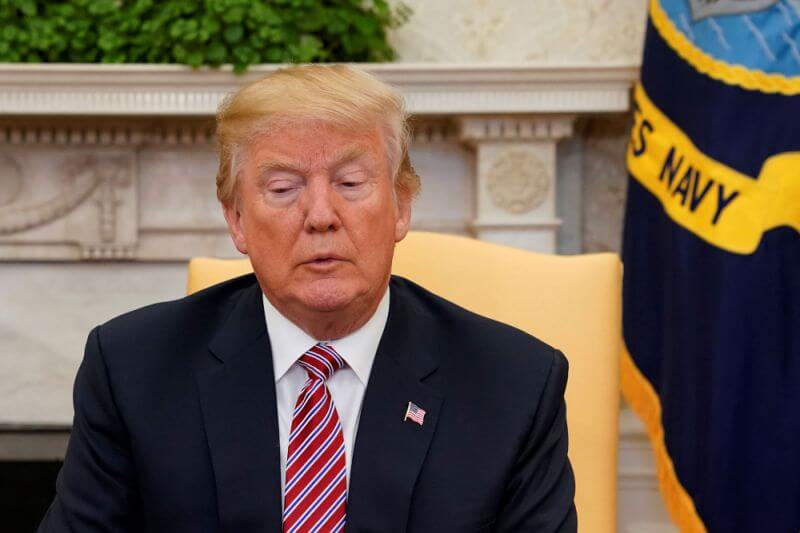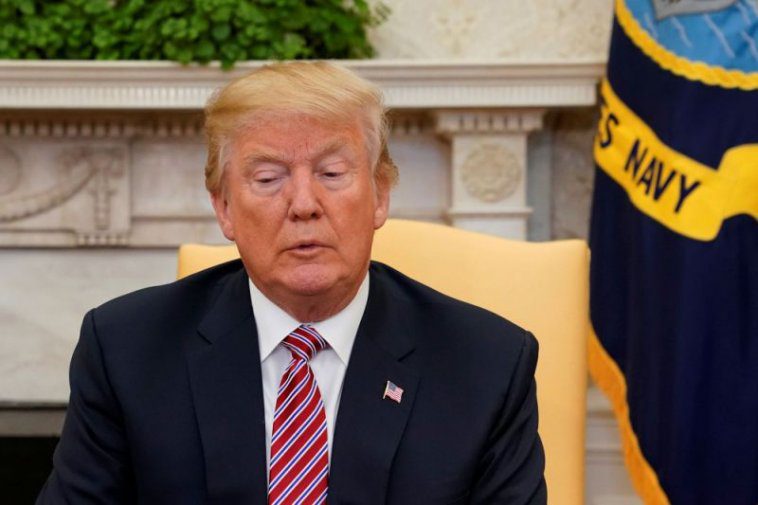
President Trump’s massive infrastructure plan may speed your commute, if it passes, but it almost certainly won’t help you browse the web any faster.
The plan barely mentions broadband infrastructure — the systems of cables, wires, conduits, towers and transmitters that bring the internet to you. The word “broadband” appears only four times in the 53-page document, and that’s not because the White House threw in a lot of synonyms. The plan reserves no money for broadband expansion, nor does it offer any action items for broadband beyond urging Congress to make it easier for wireless carriers to install smaller transmitters.
Considering Congress’ general inability to make progress in tech policy, no matter how obvious the need, the House and the Senate probably won’t revise this plan to make a dent in the lingering problem of inadequate online access. But if they wanted to, here’s what they could do with it.
Dig once, for once
The most obvious missing internet-access ingredient is a two-word phrase: “dig once.” The infrastructure plan doesn’t require that projects paid for with the $1.5 trillion in new spending it projects (of which only $200 billion would come from the federal government) include capacity for broadband.
Dig-once rules aren’t a new idea — Rep. Anna Eshoo (D.-Calif.) first proposed a bill making them part of federal infrastructure projects in 2009 — but Congress regularly fails to pass any.
Individual cities have been able to boost broadband by making their own projects dig-once endeavors. “When the streets are open for a water-pipe change, we put in the conduit,” Kansas City chief innovation officer Bob Bennett explained at an event in Washington Thursday. But a federal mandate would go much farther.
Ease permitting
The infrastructure plan advocates speeding the permitting process for roads and rails, but its sole mention of doing the same for telecom comes on page 40. There, it urges Congress to ease the rules governing the deployment of small cellular and WiFi sites.
“Much of the cost of the deployment, and sometimes why it doesn’t happen at all, is red tape and high fees at the state and local level,” said Berin Szoka, president of the libertarian policy group TechFreedom. “Federal legislation is the only way to make broadband deployment easier nationwide,”
Will Rinehart, director of technology and innovation at the American Action Forum, pointed to two existing bills that would help: one that would streamline deploying broadband on federal property (also the subject of a January 8 executive order from Trump) and another that would provide more help to communities looking to boost their own broadband.
Quicker permitting for telecom facilities will be especially helpful with two upcoming over-the-air technologies: “white spaces” broadband that uses vacant television airwaves, and 5G wireless that can deliver much faster and more responsive broadband to houses and offices.
Subsidies aren’t a dirty word
Blair Levin, a fellow with the Brookings Institute, suggested federal funding to support the construction but not operation of broadband networks in rural areas. In a post last February, he proposed a $20 billion budget, with all such grants subject to the condition of zero federal support after construction.
Chris Mitchell, director of community broadband networks at the Institute for Local Self-Reliance, suggested more support for rural electric cooperatives, one plank of a Democratic infrastructure proposal.
“Rural electrics have tremendous potential to deliver the best internet access to rural America at the lowest taxpayer subsidy cost,” he said.
The AAF’s Rinehart generally favors free-market solutions, but he, too, noted the role of federal subsidies in making broadband available to all. “Congress needs to have the tough conversation about adequately supporting the Universal Service Fund (USF), which has long served communication needs in this country,” he said.
(That federal fund first helped extend phone lines to places phone companies couldn’t profitably reach but now supports a variety of telecom services.)
Federal Communications Commission chairman Ajit Pai has himself backed putting more money into FCC projects to expand broadband connectivity.
Don’t forget cities
The infrastructure plan places an emphasis on rural America, and so have Trump’s own comments on broadband. But many urban dwellers face the same broadband problem as their rural counterparts — only one company can provide them with sufficiently fast service.
The FCC’s latest numbers show that as of the end of 2016, only 56% of census blocks nationwide had two or more providers offering downloads of 25 megabits per second or faster.
“We have work to do as a country on rural deployment, but the more pressing problem — affecting urban and rural residents alike — is the lack of affordable service options from the commercial networks that we already have deployed” said Matt Wood, policy director for Free Press.
Economist Hal Singer agreed that Trump’s plan neglects cities. He suggested that a better plan could target subsidies to telecom firms to upgrade from slow, phone-line-based digital subscriber lines to faster fiber-optic connections — which would foster competition to cable internet services.
Don’t get your hopes up
But while all of these ideas could get some support in Congress, the bigger problem with this overdue infrastructure plan — remember, it arrived more than a year after Trump took office pledging to rebuild American roads, railways, airports and waterways — is the low odds of Congress doing anything with it.
Like the president’s budget proposal, the infrastructure plan’s most likely fate is to be ignored by a legislative branch with other priorities.
More from Rob:
Email Rob at rob@robpegoraro.com; follow him on Twitter at @robpegoraro.
Follow Yahoo Finance on Facebook, Twitter, Instagram, and LinkedIn
Website: LINK


